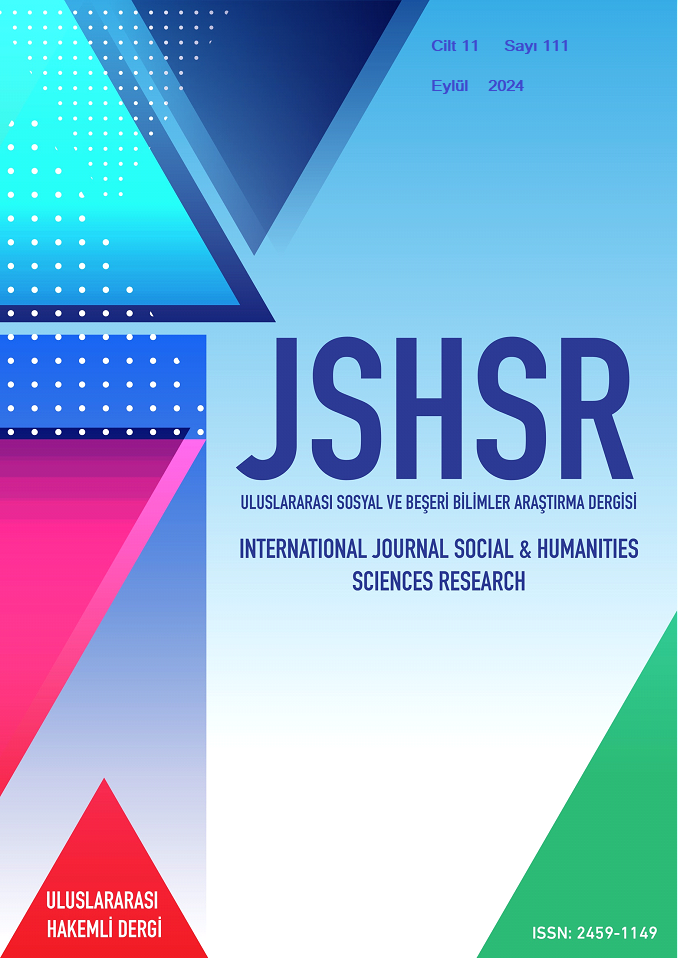Transformation of Republican Era Industrial Structure/Campus: The Case of Sümerbank Merinos Woolen Weaving Factory
DOI:
https://doi.org/10.5281/zenodo.13880766Keywords:
Sümerbank, Merinos Factory, Industrial building, urban transformation, reuseAbstract
The industrialization movement that began with the Industrial Revolution started to be felt in the Ottoman Empire in the 19th century. These industrialization efforts did not show the same progress throughout all Ottoman territories, usually developing in the capital, Istanbul, and its surrounding areas. Production, which previously took place in small workshops scattered across different parts of the city, required new spaces where machines were present and production occurred in a serialized manner; this led to the emergence of a new architectural type: industrial buildings. During this process, the technical equipment and personnel for the numerous industrial buildings established either by private enterprises or the state were often sourced from the countries from which technology was brought. The industrialization that began in the late Ottoman period continued into the Republican Era. Industrial facilities initially established by private enterprises began to be set up by institutions established by the state over time. One of these establishments, the Bursa Merinos Wool Weaving Factory founded by Sümerbank, is among the industrial buildings that paved the way for the sociological, ideological, and societal modernization of the Early Republican period.
This study examines the development/change of the Bursa Merinos Campus, established within Sümerbank, over its historical process and addresses its transformation in the context of preservation following the privatization process in the early 2000s.
References
Altun, M, Ünlü, H. ve Kesrikoğlu, F. (2001). Cumhuriyetin Kuruluş Yıllarında Bursa ve Merinos. Uludağ Üniversitesi Basımevi.
Anonim. (1952). SümerBank Bursa Merinos Fabrikası (6). Ulus Basımevi.
Anonim. (2002).Sümerbank Merinos Fabrikası. Bursa Kültür ve Sanat Yayınları.
Arıtan, Ö. (2005). Erken Cumhuriyet Döneminde Sümerbank Yerleşkeri: İdeolojik, mekânsal bir okuma. Arredamento, (1). 102-109.
Arıtan, Ö. (2004). Kapitalist/sosyalist modernleşme modellerinin erken cumhuriyet dönemi mimarlığının biçimlenişine etkileri-Sümerbank KİT yerleşkeleri üzerinden yeni bir anlamlandırma denemesi. (yayınlanmamış doktora tezi). Dokuz Eylül Üniversitesi.
Bursa Tabiat ve Kültür Varlıklarını Koruma Bölge Kurulu Arşiv Belgeleri (1990-2015).
İktisat Vekaleti. (1933). Raporlar, Kısım I, Sınai Tesisat ve İşletme. (s.19). Başvekalet Matbaası.
Kaprol, T. (2002).Cumhuriyet Sonrası 1930-1950 Yılları Arasında Bursa’da Mimari Gelişim. Uludağ Üniversitesi Mühendislik-Mimarlık Fakültesi Dergisi, (1) 183-190.
Köksal, G. (2005). İstanbul’daki endüstri mirası için koruma ve yeniden kullanım önerileri. (yayınlanmamış doktora tezi) İstanbul Teknik Üniversitesi.
Köksal, G. (2012a). Endüstri mirasını koruma ve yeniden kullanım yaklaşımı. Güney Mimarlık, (8). 18-24.
Köksal, G. (2012b). Kültürel Miras ve Endüstri Mirası Yönetimi. Aksoy, A. ve Ünsal, D. (ed.) Kültürel Miras Yönetimi içinde (s. 150-151). Anadolu Üniversitesi yayınları.
Kayın, E. (2013). Endüstri mirasına yönelik koruma müdahalelerini değerlendirme ölçütleri ve Terkos Pompa İstasyonu. Mimaris,t (370).
Omay Polat, E. (2008a).Modern mimarlık mirasını onaylamak: yasal süreç ve tescil kararlarına bakış. Mimarlık, (340).
Omay Polat, E. (2008b). Türkiye’nin modern mimarlık mirasının korunması- kuram ve yöntem bağlamında bir değerlendirme. (yayınlanmamış doktora tezi) Yıldız Teknik Üniversitesi.
Sarıgöz, A. (2018). Erken Cumhuriyet Dönemi endüstri yapılarından Sümerbank Bursa Merinos Yerleşkesi. (yayınlanmamış yüksek lisans tezi) MSGSÜ.
Önel, H. (2005). Bursa Atatürk Kültür Merkezi ve Merinos Kültür Parkı Kentsel Dönüşüm Projesi raporu.
Tanyeli, G. (1995). Rahmi M.Koç sanayi müzesi. Arredamento Dekorasyon, (1). 114-121.
Tanyeli, G. (1998). Endüstri Arkeolojisi. Arredamento Mimarlık, 100(2), 92-99.
Toprak, Z. (1985). II. Meşrutiyet ve Osmanlı Sanayii. Tanzimat’tan Cumhuriyet’e Türkiye Ansiklopedisi, c. 5, 1348-1359.
Tuna, S. (2002).Türkiye’de devlet işletmeleri -1930/1940. (yayınlanmamış doktora tezi) İstanbul Üniversitesi.
Uysal, İ. (1977). Hazır Giyim Fabrikası. Merinos Gazetesi, (6). 90-91.
Zeybekoğlu S. (2010). Bir mekan analizi: Sümer Holding A.Ş. Bursa Merinos Yünlü İşletmesi. Güney Marmara Mimarlık Dergisi, (13). 7-11.
Downloads
Published
How to Cite
Issue
Section
License
Copyright (c) 2024 INTERNATIONAL JOURNAL OF SOCIAL HUMANITIES SCIENCES RESEARCH

This work is licensed under a Creative Commons Attribution 4.0 International License.


